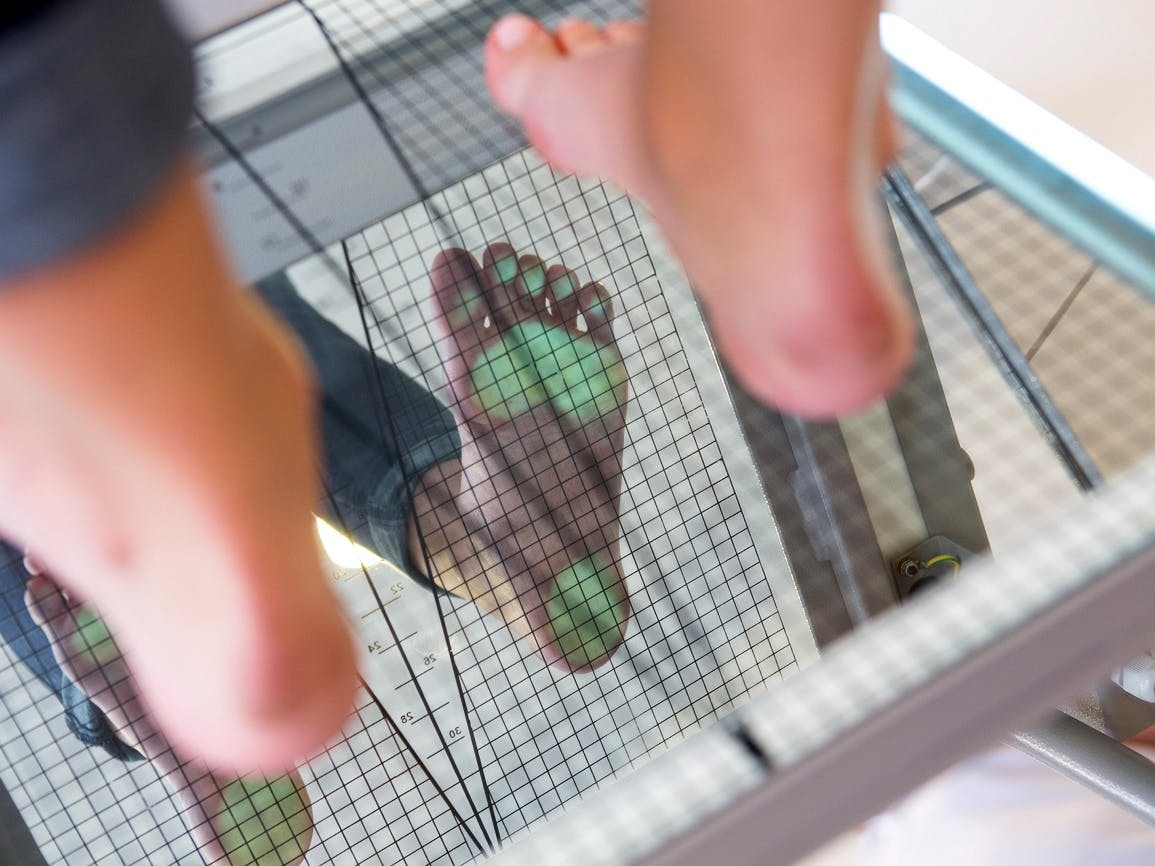
Medicare Part B covers medically necessary podiatry services.
Do you have foot pain? If so, you're not alone.
Around 33% of all people over the age of 65 experience some type of foot pain. Between the natural wear and tear of aging, unsupportive footwear, and osteoarthritis, experiencing pain or other issues with your feet is common as you get older. This leaves many wondering whether Medicare covers podiatry services.
As with most Medicare-covered services, the short answer is that, if it’s considered medically necessary, the program will likely cover seeing a podiatrist. Below we will discuss what qualifies a patient for Medicare-covered podiatry services.
Common foot issues
Before we get into how and what Medicare covers for podiatry, it is important to understand some of the more common issues people have with feet and how to treat them.
Athlete's foot
This is a fungal infection usually picked up by walking barefoot in moist environments, such as locker rooms or pool decks. You may experience dry or scaly skin, burning or itching between the toes, and/or swelling of the infected area. Luckily, athlete's foot is typically treated easily with over-the-counter creams. Your doctor may prescribe an oral antifungal medication if over-the-counter methods do not work.
Bunions
Bony, painful bumps, bunions develop at your big toe joint and are likely to occur after years of pressure from poor-fitting shoes. The most common symptom is pain, although you may also experience redness and swelling. It is recommended you wear open-toed shoes when dealing with a bunion to help relieve pain. Other methods of treatment include "bunion shield" pads that help cushion the joint, orthotics, splints, and toe separators. If the other methods do not help, your doctor may recommend surgery, but this is relatively rare.
Calluses and corns
These are thickened areas of skin that form on your soles or toes, caused by repeated pressure. While calluses are generally painless, corns are often painful or tender, and may have a fluid-filled sac beneath them. They can be treated at home with a pedicure-like treatment. Soak the calluses or corns in warm water, then file them down with a pumice stone (also dipped in water).
Also, be sure to keep your toenails trim, as corns can form when the nail presses up against the shoe. And always trim toenails straight across to avoid ingrown nails.
Find a Medicare plan that covers podiatry and other specialists
Neuropathy
While there are several causes for neuropathy (injury, genetics, etc.), the most common type experienced by Medicare beneficiaries is diabetic neuropathy. In the feet, this can mean anything from a feeling of pins and needles to a complete loss of feeling, which is incredibly dangerous.
If you have neuropathy, it is important to not walk barefoot, as the condition makes it difficult to feel sensations of pain or discomfort. With advanced stages of neuropathy, you may not even realize you've stepped on something or injured yourself. This can lead to infections and other issues down the road.
To reduce risk of infection and cracked skin, wash and lotion your feet daily (but no lotion between the toes!). It is also important to keep your feet warm, so wear those socks even to bed, and wiggle your toes frequently to improve circulation.
Plantar fasciitis
The plantar fascia is a thin ligament along the bottom of your foot that connects the heel to the front of the foot. When this ligament gets inflamed and irritated, it is called plantar fasciitis. The condition causes pain in or near the heel that usually feels worse after resting and better after a few minutes of activity.
The best home treatment methods are ice, rest, simple stretches, and supportive footwear. Over-the-counter NSAIDs can help mitigate pain.
Toenail fungus
Known as onychomycosis, toenail fungus is a fungal infection underneath the toenail that affects nearly 20% of people over the age of 60 and 50% of people over the age of 70.
The condition is normally painless, but the nail typically turns a shade of brown, white, or yellow. Unfortunately, it is difficult to get rid of, with topical treatments providing minor results and oral medications being dangerous for those over 65. However, it is also harmless. The best way to avoid toenail fungus is keeping the nail clean and regularly trimming it. Moisturizers that have urea may also help.
When does Medicare cover podiatry?
Podiatry services are covered under Medicare Part B. Once you've met your Part B deductible, you pay 20% of the Medicare-approved amount.
Part B covers podiatry services for diabetes-related foot care and medically necessary treatment for injuries or diseases such as bunion deformities, hammer toe, or heel spurs. Annual foot exams may be covered if they are related to diabetes or an injury/disease that needs follow up. Outside of this, Original Medicare does not cover routine foot exams, cutting of calluses or corns, or other hygienic maintenance.
Since Original Medicare does not require referrals, you must meet the qualifications listed above for Medicare to cover any care. You may not need a referral, but that does not mean automatic coverage.
When in doubt, ask your doctor whether Medicare will cover a service.
Does Medicare Advantage cover podiatry?
Medicare Advantage (Part C) legally must provide the same coverage as Original Medicare, so at a bare minimum you would have the same coverage level as if you went through Part B.
However, most Medicare Advantage plans offer a variety of benefits above the standard Medicare offerings. If you currently have an Advantage plan, reach out to your provider or review your plan to see what foot care options are covered.
It’s fast and easy to compare Medicare Advantage plans with our Find a Plan tool. Just enter your zip code and go!
Unlike Original Medicare, Part C plans may require a referral to see a specialist. While this is a slight restriction, it does make it easier to know whether the service will be covered. You also have to stay within your plan's provider network if you belong to an HMO.
Some Advantage plans offer greater freedom to see out-of-network providers for a higher cost, although you may still need to get a referral.
Can Medigap help with podiatry services?
Medicare Supplement Insurance, also known as Medigap, is designed to help cover your out-of-pocket costs when you have Original Medicare. However, it only works with services covered by Medicare Parts A and B. So if Medicare has approved your podiatry services, then Medigap can help. But it cannot cover anything Original Medicare itself would not.
Final thoughts
It can be tricky knowing what Medicare considers medically necessary. When in doubt, always ask your provider.
Navigating Medicare can also be pretty tricky – especially with advice coming at you from all sides. That’s why it can be a relief to have someone on your side, explaining your options and answering all your Medicare questions. Call us now to schedule a free review of your Medicare coverage.
Additional resources
Find Your Medicare Plan Today
Internal website
National Library of Medicine: Foot Problems in Older Adults
External website



